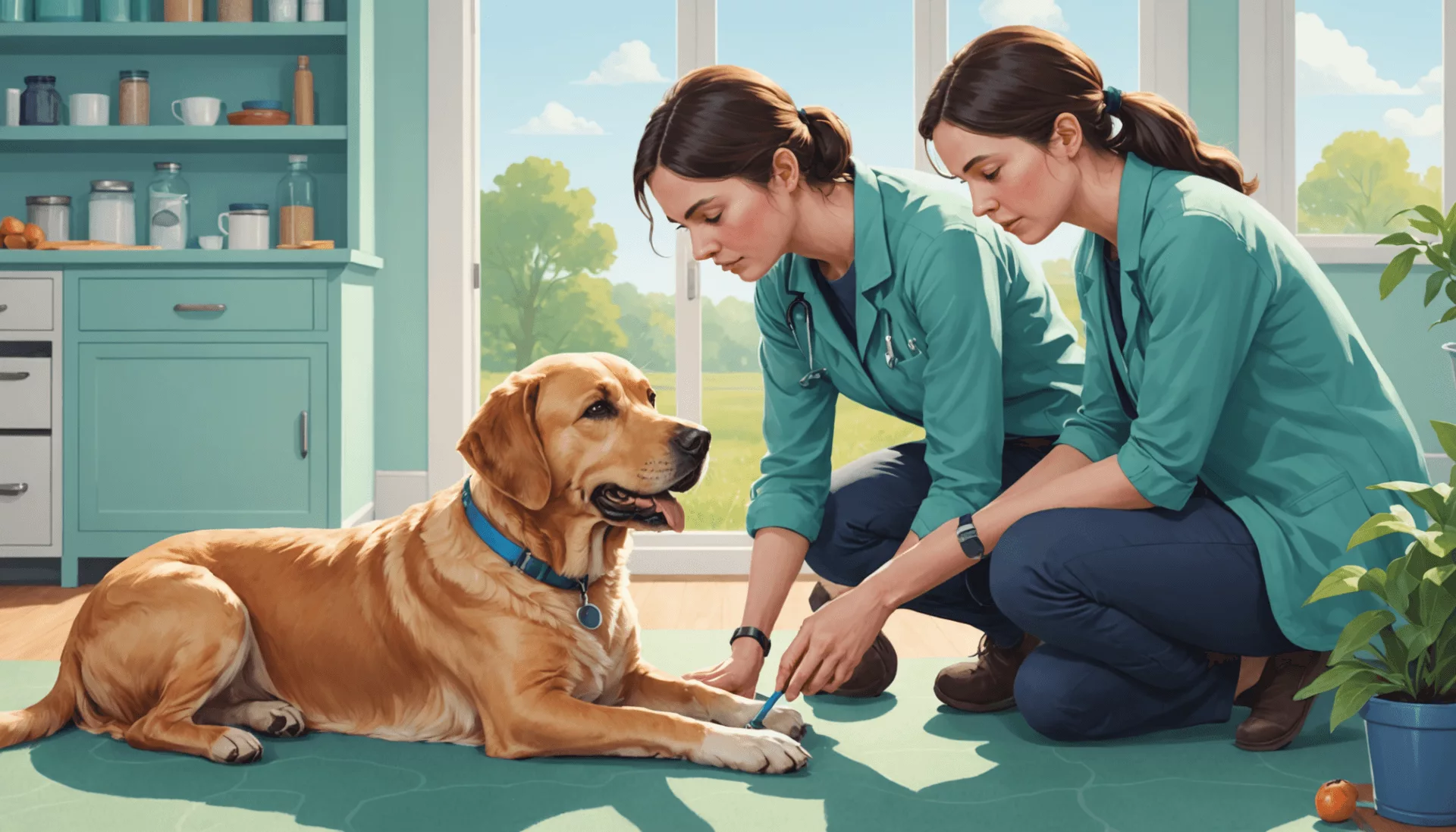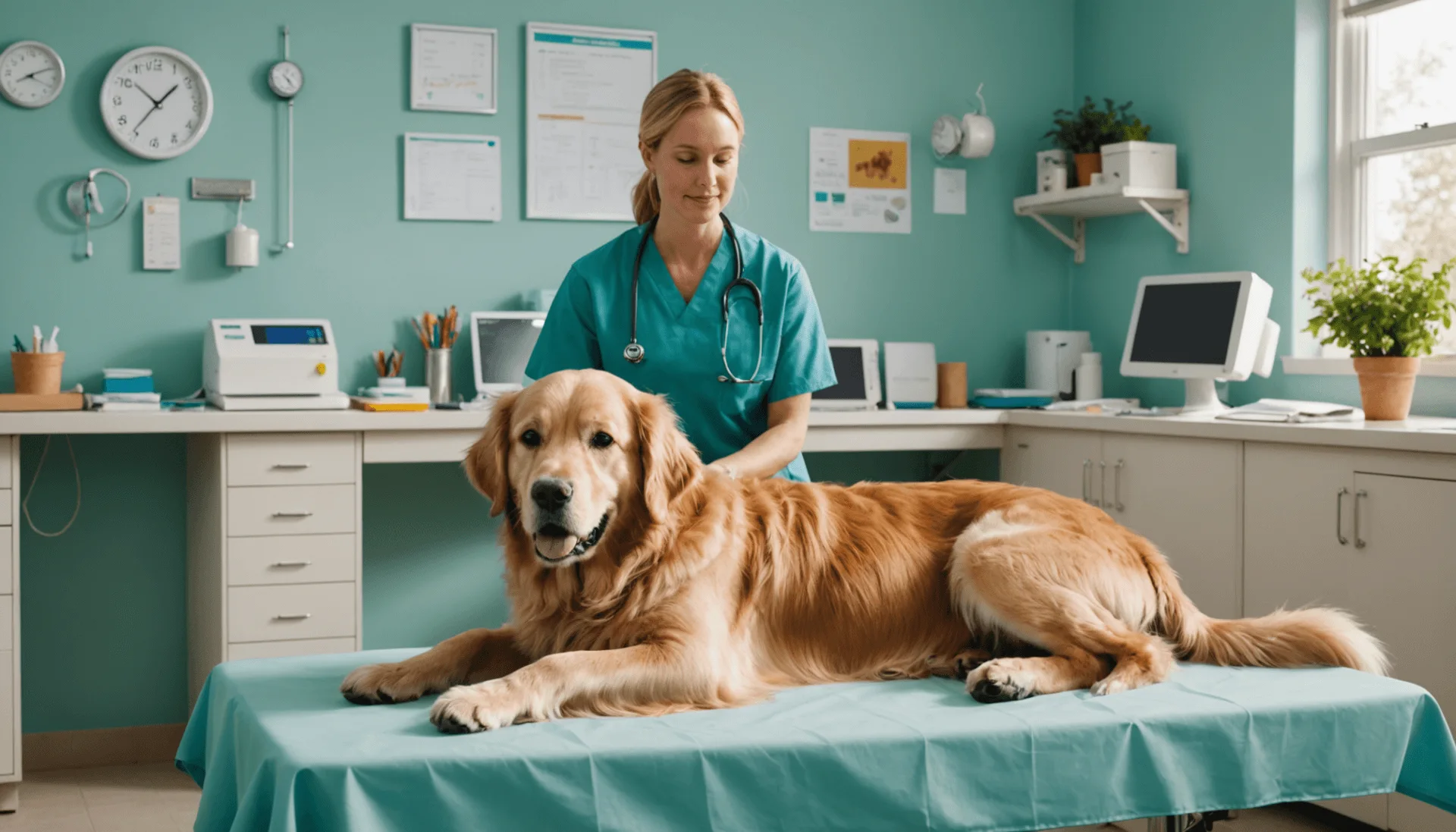Are you worried about your furry friend developing lumps? If so, you’re not alone! Many dogs can face the challenge of lipomas, which are fatty tumors that can appear on their bodies. Choosing the best dry dog food for lipomas is essential to help manage your dog’s health and comfort. Proper nutrition can make a big difference in how these benign tumors affect your pet.
Understanding what lipomas are, why they form, and recognizing their symptoms is crucial for every dog owner. Ignoring the right diet could lead to more significant health issues down the line, so it’s important to act. In this article, we’ll explore the best dry dog foods specifically planned to support dogs with lipomas, along with other dietary tips to help prevent their growth. Get ready to learn how you can keep your dog’s health in check and ensure they live a happy, active life!
Expert Recommendations
- Purina Pro Plan Sensitive Skin and Stomach Dog Food Dry,...: Ideal for dogs with sensitive stomachs, offering easily digestible ingredients for optimal digestion and overall health.
- Hill's Science Diet Sensitive Stomach & Skin, Adult 1-6,...: Perfect for maintaining a shiny coat and healthy skin, thanks to high-quality chicken and essential nutrients.
- Blue Buffalo Life Protection Formula Adult Dry Dog Food,...: Supports a strong immune system and vitality with real chicken and a balanced blend of antioxidants.
- PetLab Co. Itch Relief Chews - Support for Dry, Occasionally...: Enhances joint health naturally with turmeric and curcumin, promoting active and comfortable movement.
- Natural Balance Limited Ingredient Adult Dry Dog Food with...: Excellent for dogs with food sensitivities, offering a limited ingredient formula that minimizes allergic reactions.

Understanding Lipomas in Dogs
What is a Lipoma?
A lipoma is a soft, fatty lump that forms under a dog’s skin. These growths are benign, meaning they are not cancerous and rarely cause pain. While most lipomas are harmless, they can grow larger and become noticeable. Lipomas comprise fat cells and are often found in older dogs, especially in breeds that are more prone to developing them. Common areas for lipomas to appear include the body, legs, and underarms.
- Source: Dog Health Overview
Causes of Lipomas in Dogs
The exact cause of lipomas in dogs is not completely understood. However, several factors may influence their development:
- Genetics: Certain breeds are genetically predisposed to lipoma formation.
- Obesity: Excess fat can lead to the development of more lipomas.
- Diet: The type of food a dog eats may affect the likelihood of developing these lumps. Ongoing research aims to clarify this connection.
- Source: Veterinary Insights
Symptoms of Fatty Tumors: Recognizing the Signs
Dogs with lipomas typically show few symptoms. The primary sign is soft, movable lumps beneath the skin. These lumps can vary in size and shape, but are not painful. Unlike malignant tumors, lipomas rarely cause discomfort or affect a dog’s behavior. If a lump changes in size, shape, or appearance, it is important to consult a veterinarian promptly to rule out other conditions.
- Source: Dog Health Overview
Comparison Table
| Image | Product Name | Key Features | Best For | CHECK PRICE |
|---|---|---|---|---|
 | Purina Pro Plan | Sensitive stomach formula High-quality protein Balanced vitamins and minerals | Dogs with sensitive digestive systems | CHECK PRICE |
 | Hill's Science Diet | Supports healthy skin and coat High-quality chicken protein Essential antioxidants | Dogs needing skin and coat support | CHECK PRICE |
 | Blue Buffalo | Real chicken as first ingredient Rich in antioxidants Promotes immune health | Active dogs requiring immune support | CHECK PRICE |
 | PetLab Co | Natural turmeric & curcumin Supports joint health Reduces inflammation | Dogs with joint health concerns | CHECK PRICE |
 | Natural Balance | Limited ingredient formula Single protein source – Salmon Easily digestible carbohydrates | Dogs with food sensitivities | CHECK PRICE |

Best Dry Dog Food for Lipomas
1. Purina Pro Plan
 CHECK PRICE
CHECK PRICE
Purina Pro Plan is a top choice for dog owners seeking balanced nutrition for their pets. This formula is designed for easy digestion, making it ideal for dogs with sensitive stomachs. It’s carefully selected ingredients help maintain a healthy weight, which is important for dogs dealing with lipomas.
Key Features:
- High-quality protein supports muscle health.
- Live probiotics promote digestive well-being.
- Omega fatty acids enhance skin and coat health.
- Easy-to-digest ingredients reduce gastrointestinal stress.
Pros and Cons:
| Pros | Cons |
|---|---|
| High-quality ingredients | May not suit all dog breeds |
| Aids in healthy weight management | Some dogs may prefer different flavors |
| Contains probiotics for gut health | Higher price than some brands |
Best For:
- Dogs with sensitive stomachs.
- Pet owners wanting a trusted dog food brand.
- Keeping healthy weight in dogs prone to lipomas.
2. Hill’s Science Diet
 CHECK PRICE
CHECK PRICE
Hill’s Science Diet is specially formulated to support sensitive stomachs and skin. Featuring high-quality chicken as the first ingredient, it provides essential nutrients and antioxidants to promote overall well-being and a shiny coat.
Hill’s Science Diet is tailored for dogs with sensitive stomachs. This dog food is nutrient rich, supporting overall health and wellness. Many users report it may help manage lipomas by encouraging a balanced diet. Additionally, Hill’s Science Diet is formulated with high-quality ingredients, making it easier for dogs with sensitive stomachs to digest. Many pet owners appreciate the peace of mind that comes with knowing they are providing their dogs with a reliable food option. When considering different brands, it’s also important to look into factors like badlands ranch dog food safety to ensure that your pet’s nutrition is both beneficial and secure.
Key Features:
- Specialized for sensitive digestion.
- Antioxidants support a healthy immune system.
- Quality protein helps maintain lean muscle mass.
Pros and Cons:
| Pros | Cons |
|---|---|
| Supports digestive health | Can be pricier than some brands |
| Uses high-quality, natural ingredients | Some dogs may need time to adjust to the taste |
Best For:
- Dogs with dietary sensitivities or allergies.
- Pet owners seeking vet-recommended options.
- Promoting wellness in dogs.
3. Blue Buffalo
 CHECK PRICE
CHECK PRICE
Blue Buffalo is celebrated for its commitment to high-quality, natural ingredients. This dog food supports healthy weight management, crucial for dogs with lipomas. The formula delivers balanced nutrition without artificial preservatives.
Key Features:
- Real meat serves as a primary protein source.
- Includes wholesome grains and vegetables.
- Free from artificial flavors and preservatives.
Pros and Cons:
| Pros | Cons |
|---|---|
| Natural ingredients without fillers | Some dogs may not like the taste |
| High protein content supports muscle health | Higher price than budget options |
Best For:
- Owners are interested in natural dog food.
- Dogs needing a high-protein diet.
- Maintaining a healthy weight in overweight dogs.
4. PetLab Co
 CHECK PRICE
CHECK PRICE
PetLab Co features turmeric in its formula, known for its anti-inflammatory properties. This may aid fat metabolism, making it a suitable choice for dogs with lipomas.
Key Features:
- Turmeric helps reduce inflammation.
- Probiotics support healthy digestion.
- Promotes skin and coat health.
Pros and Cons:
| Pros | Cons |
|---|---|
| Supports skin and coat health | Limited availability in stores |
| Contains beneficial herbs for overall health | May not suit all dogs |
Best For:
- Dogs with skin concerns.
- Pet owners looking for anti-inflammatory support.
- Maintaining digestive health in dogs.
5. Natural Balance
 CHECK PRICE
CHECK PRICE
Natural Balance offers limited ingredient diets that are gentle on dogs’ stomachs. This food may help prevent allergies, which can contribute to lipoma development.
Key Features:
- Limited ingredients minimize food sensitivities.
- Contains high-quality proteins and nutritious vegetables.
- Easy to digest for sensitive dogs.
Pros and Cons:
| Pros | Cons |
|---|---|
| Ideal for dogs with allergies | Fewer flavor options |
| High-quality protein sources | May require a gradual transition |
Best For:
- Dogs with food sensitivities or allergies.
- Pet owners seeking a straightforward diet.
- Supporting digestive health in sensitive dogs.

Treatment Options for Lipomas
Managing lipomas in dogs involves understanding both surgical and non-surgical treatment options. Lipomas are benign fatty tumors that can develop under a dog’s skin. While not harmful, treatment may be necessary if they cause discomfort or grow too large.
Surgical Removal of Lipomas
Surgical removal is a common treatment for lipomas, especially if they cause pain or discomfort. During this procedure, a veterinarian makes an incision over the lipoma and removes the fatty tissue. This option typically has a good prognosis, and most dogs recover quickly, returning to normal activities within a few days.
Key points about surgical removal include:
- Effectiveness: This method is effective for large or painful lipomas.
- Recovery: Dogs usually recover swiftly with minimal complications.
- Considerations: This option may not be suitable for older or high-risk dogs because of anesthesia concerns.
Non-Surgical Treatments for Canine Lipomas
Non-surgical treatments can include dietary changes, natural supplements, and herbal remedies. These approaches aim to manage lipoma size or prevent their growth. Some pet owners find success using dog foods that are lower in fat or enriched with anti-inflammatory ingredients.
Examples of non-surgical treatments:
- Dietary Adjustments: Switching to low-fat dog foods may help manage lipomas.
- Supplements: Herbs like turmeric and omega-3 fatty acids can provide anti-inflammatory benefits.
- Regular Exercise: Keeping dogs active may reduce the risk of new lipomas forming.
Many pet owners report positive outcomes using these methods, but it is essential to consult a veterinarian before starting any new treatment.
When to Consider Treatment for Fatty Tumors
Consider treatment for lipomas when they cause discomfort, pain, or significant cosmetic concerns. Regular veterinary check-ups are crucial for monitoring the condition. If a lipoma grows rapidly or changes in appearance, seek immediate veterinary attention.
Signs that treatment might be necessary include:
- Size Increase: If a lipoma grows larger than usual.
- Discomfort: Indications that the dog is in pain or uncomfortable.
- Location Issues: Lipomas in areas that restrict movement or cause irritation.
While many lipomas do not require treatment, monitoring and veterinary guidance are vital to ensure the dog’s health and comfort. For more information on managing lipomas, including dietary options, see the section on Best Dry Dog Food for Lipomas.
Citations:
- For surgical options and general treatment advice, see Wikipedia.
- For non-surgical methods, check Happy Trails and Wag N Tails.

Common Dog Breeds Prone to Lipomas
Breeds with Higher Risk of Developing Lipomas
Certain dog breeds are more likely to develop lipomas because of genetic traits. These breeds include:
- Labrador Retrievers: Friendly Labradors can also become overweight, increasing their risk of lipomas.
- Cocker Spaniels: As they age, Cocker Spaniels often develop fatty tumors, making them more susceptible to lipomas.
- Dachshunds: because of their unique body structure and genetics, dachshunds may develop lipomas more frequently.
- Boxers: This breed is at risk for lipomas, especially as they get older.
- Golden Retrievers: Similar to Labradors, Golden Retrievers are prone to weight gain, which may lead to lipoma development.
Recognizing these breeds can help owners monitor their pets’ health and seek veterinary advice when needed.
How Genetics Influence Lipoma Growth
Genetics significantly affect the development of lipomas in dogs. Some breeds inherit traits that make them more likely to develop these tumors. Research shows that specific genes may influence fat storage and metabolism, leading to increased lipoma formation. Breeds like Labrador Retrievers and Cocker Spaniels, which often struggle with obesity, may see a higher incidence of lipomas.
Understanding genetic factors can guide pet owners in making informed decisions about their dog’s diet and lifestyle. Maintaining a healthy weight and providing balanced nutrition are essential steps to reduce the risk of lipoma development.
FAQs About Canine Lipoma in Specific Breeds
- What signs should be observed in a dog?
- Owners should look for soft, movable lumps under the skin. If these lumps are painless and do not cause discomfort, they may be lipomas. Consulting a veterinarian for a proper diagnosis is recommended.
- How can a diet help manage lipomas?
- A balanced and nutritious diet can help maintain a healthy weight, reducing the risk of lipoma growth. Foods high in quality protein and low in fat are often advised.
- When is veterinary advice necessary?
- Veterinary consultation is important if lipomas grow rapidly, cause discomfort, or restrict movement. Regular check-ups help monitor any changes in size or condition.
- Are there breeds less prone to lipomas?
- Smaller breeds with lean body types, such as greyhounds or whippets, typically have a lower risk of developing lipomas. However, individual health and genetic factors can differ widely.
- Can lipomas be prevented?
- While genetic factors cannot be altered, a healthy diet and weight can help prevent lipomas. Regular exercise is also beneficial in reducing risk.
By understanding breed predispositions and genetic influences, dog owners can take proactive steps to safeguard their pets’ health. Regular veterinary check-ups and a healthy lifestyle are essential in managing and preventing lipomas in dogs.

Nutritional Strategies to Prevent Lipomas
Importance of a Balanced Diet in Lipoma Management
A balanced diet is key to managing lipomas in dogs. It helps maintain a healthy weight and reduces the risk of developing new lipomas. Obesity can increase the likelihood of lipoma formation, so keeping dogs at a healthy weight is essential. A diet rich in lean proteins, healthy fats, and fiber keeps dogs satisfied and supports their overall health.
High-quality dog food should contain a few artificial ingredients, focusing instead on whole foods. Look for diets that include lean meats, vegetables, and whole grains. Ingredients such as chicken, fish, sweet potatoes, and peas provide essential vitamins and minerals. These nutrients support the body’s systems, contributing to healthy skin and tissue, which may help reduce lipoma development. Additionally, high-quality dog food should avoid common allergens like corn, soy, and wheat, as these can exacerbate inflammation or sensitivities. Opting for the best dog food for ear infections often means selecting options rich in omega-3 fatty acids, which help reduce inflammation and promote overall health. Prioritizing natural, nutrient-dense ingredients can make a significant difference in your dog’s well-being, supporting their immune system and reducing the risk of recurring health issues.
Recommended Herbs to Get Rid of Lipomas
Besides a balanced diet, specific herbs may support the management of lipomas in dogs. Some commonly recommended herbs include:
- Turmeric: Contains curcumin, known for its anti-inflammatory properties. It may help reduce inflammation and promote overall health.
- Dandelion: Used in herbal remedies, dandelion is thought to aid digestion and enhance liver function, supporting fat metabolism.
- Milk Thistle: Believed to promote liver health. A healthy liver helps detoxify the body and manage fat levels.
Consulting a veterinarian before adding herbs to a dog’s diet is important to ensure they are safe and suitable for the dog’s specific needs.
Lifestyle Changes to Prevent Lipoma Growth
Lifestyle adjustments can influence a dog’s health and help prevent lipoma growth. Consider these practical strategies:
- Regular Exercise: Daily physical activity helps maintain a healthy weight. Activities like walking, playing fetch, or swimming can keep dogs active. Aim for at least 30 minutes of exercise daily, adjusting for the dog’s age and health status.
- Weight Management: Monitor the dog’s weight regularly. If weight gain occurs, adjust the diet and exercise routine as needed. Maintaining a healthy weight can reduce the likelihood of developing new lipomas.
- Routine Veterinary Check-ups: Regular veterinary visits can help catch potential health issues early. Vets can provide tailored dietary recommendations and monitor existing lipomas for changes.
Implementing these lifestyle changes, along with a balanced diet and the potential use of beneficial herbs, creates an effective strategy for managing and preventing lipomas in dogs.
Conclusion
Understanding lipomas in dogs is key to managing their health. Genetics and diet can influence these benign tumors, so recognizing the symptoms early is important. Choosing the right dry dog food, like Purina Pro Plan or Hill’s Science Diet, can help support your dog’s health and possibly prevent further growth of lipomas.
Incorporating a balanced diet and considering lifestyle changes can make a big difference in keeping your furry friend healthy. Remember, proper nutrition is vital for your dog’s overall well-being, especially when dealing with lipomas. Keep learning and exploring the best options for your beloved pet, as they deserve the best care possible!

